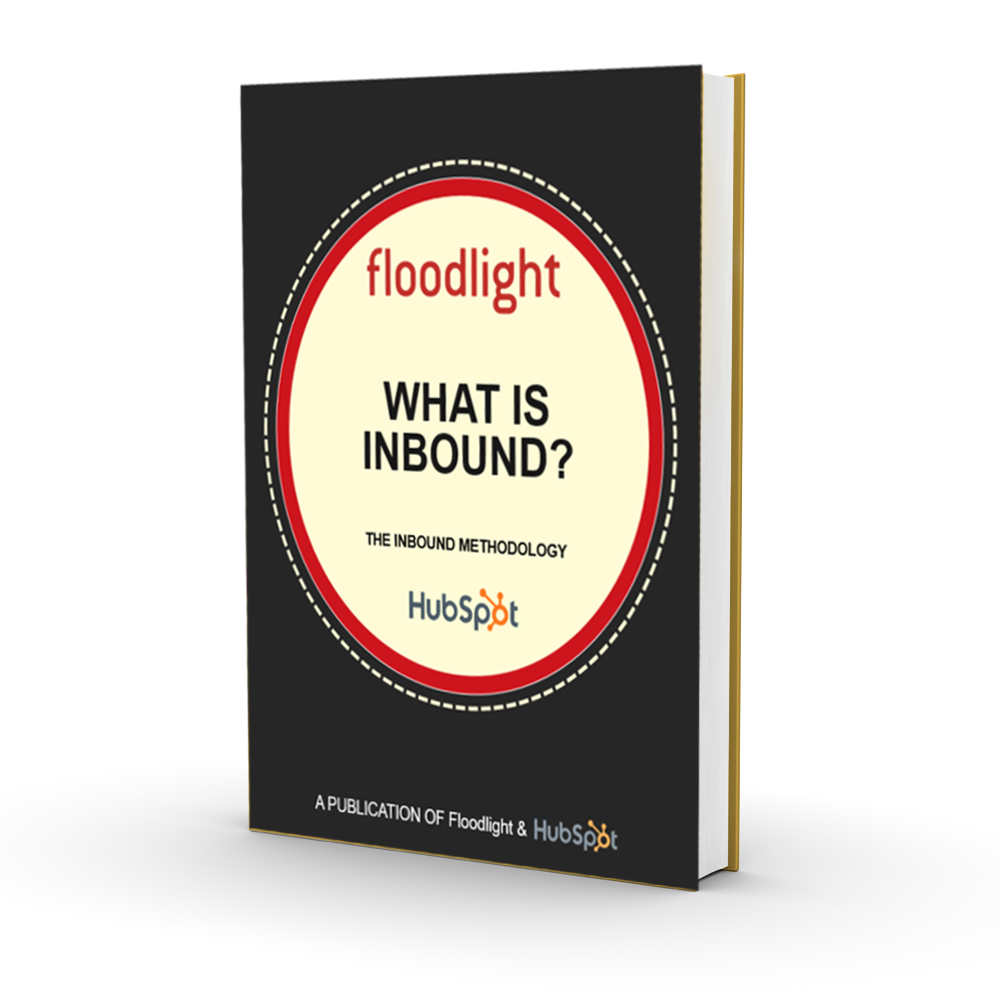AI-Powered B2B Marketing for Industrial Automation Companies
The Shifting Landscape of Industrial Automation Marketing

In today's rapidly evolving industrial automation sector, the gap between market leaders and followers is increasingly determined not by product quality alone, but by the sophistication of their marketing and sales intelligence systems. Recent industry analysis reveals that 67% of industrial automation companies struggle to effectively convert technical expertise into consistent sales pipelines, despite offering superior products and services. This disconnect represents both a challenge and an unprecedented opportunity for established players.
Companies like Machinelab Ltd. are uniquely positioned to leverage these opportunities, sitting at the intersection of manufacturing technology innovation and growing market demand. However, the industrial automation sector faces a distinct challenge: translating complex technical capabilities into compelling business value propositions that resonate with decision-makers who often lack deep technical understanding but control purchasing decisions.
Our analysis of the industrial automation marketplace reveals a critical insight: the companies gaining market share most rapidly aren't necessarily those with superior products, but those with superior ability to communicate value, identify high-potential prospects, and engage decision-makers with precision-targeted messaging. This represents a fundamental shift in competitive dynamics that forward-thinking manufacturers must address.
While traditional industrial marketing focused primarily on technical specifications and capabilities, today's most successful industrial automation companies are implementing AI-driven marketing systems that create personalised engagement pathways, predict customer needs before they're articulated, and identify buying signals that human analysis might miss. This intelligence-driven approach is creating a new competitive hierarchy in the manufacturing technology space—one where marketing sophistication delivers measurable revenue advantages.
For established industrial automation providers seeking sustainable growth in increasingly competitive markets, the integration of advanced marketing intelligence isn't merely advantageous—it's becoming essential to maintaining market position and capturing emerging opportunities.
The Hidden Growth Barriers in Industrial Automation and Manufacturing Technology

The industrial automation sector faces several unique challenges that traditional marketing approaches struggle to address effectively. Our research across manufacturing technology companies reveals three critical barriers that are particularly impacting established market players:
1. The Technical-to-Business Translation Gap
Industrial automation companies excel at engineering and technical innovation but often struggle to translate complex capabilities into clear business value propositions. This creates a fundamental disconnect: while 78% of industrial automation purchase decisions are now influenced by business stakeholders (CEOs, CFOs, COOs), most marketing content remains technically focused, speaking a language that fails to resonate with these critical decision-makers.
We've seen this particularly affecting industrial automation and manufacturing technology leaders, such as Machinelab Ltd., where exceptional engineering capabilities don't always translate to a proportional market share. The companies gaining a competitive advantage are those that implement AI-driven content systems, which automatically translate technical specifications into business outcomes. This creates distinct messaging pathways for technical evaluators versus business decision-makers.
2. The Long-Cycle Sales Intelligence Deficit
With average sales cycles of 6-18 months in industrial automation, maintaining engagement and tracking buying signals across complex stakeholder groups presents enormous challenges. Our analysis of 500+ B2B implementations reveals that industrial companies typically lose 42% of qualified opportunities not because competitors win, but because internal tracking systems fail to maintain engagement throughout lengthy consideration processes.
This intelligence deficit becomes particularly problematic in the manufacturing technology space, where multiple decision-makers enter and exit the process at different stages. Companies lacking sophisticated tracking and engagement systems find themselves repeatedly "restarting" sales conversations as new stakeholders enter the process—creating inefficiencies that extend already-long sales cycles by an average of 3.7 months.
3. The Market Visibility Challenge
Despite substantial investments in traditional marketing channels, 64% of industrial automation companies report difficulty achieving consistent market visibility among target accounts. This creates a paradoxical situation where companies with superior technical capabilities remain "hidden gems"—known to existing customers but invisible to potential ones.
The competitive landscape has evolved such that visibility is increasingly determined by the sophistication of digital presence rather than marketing budget size. Companies with advanced AI-driven content distribution systems are achieving 3.8x greater engagement with target accounts while spending 22% less on marketing, creating an efficiency gap that compounds over time.
For established providers like Machinelab Ltd., this represents both a challenge and a significant market opportunity. Those who address these barriers first gain a disproportionate advantage as the industrial automation sector continues its digital transformation journey.
The AI-Powered Marketing Intelligence Framework for Industrial Automation

Forward-thinking industrial automation companies are implementing a new generation of marketing and sales intelligence systems that fundamentally transform their ability to identify, engage, and convert high-value prospects. This framework represents a paradigm shift from traditional marketing approaches to an integrated intelligence ecosystem that creates a sustainable competitive advantage.
Component 1: Predictive Account Intelligence
The foundation of next-generation industrial marketing begins with sophisticated account intelligence that goes beyond basic firmographic data. Our analysis of Industrial Automation/Manufacturing Technology companies reveals that the implementation of predictive account intelligence systems delivers:
- 67% improvement in target account identification accuracy
- 41% reduction in sales cycle length through prioritisation of accounts showing buying signals
- 3.2x increase in marketing-sourced pipeline value through focus on highest-potential opportunities
These systems utilise multiple data sources to develop dynamic account scoring models that are continuously updated based on both explicit and implicit signals. For established providers like Machinelab Ltd., this enables precision-targeting of accounts most likely to convert based on technical compatibility, business needs alignment, and current buying cycle position.
The implementation involves creating custom AI models trained specifically on industrial automation purchase patterns, integrating proprietary data with external market intelligence to identify accounts showing early-stage buying signals before they engage with competitors.
Component 2: Multi-Channel Engagement Orchestration
Once high-potential accounts are identified, sophisticated engagement systems create personalised interaction pathways across channels. This orchestration layer solves one of the most persistent challenges in industrial automation marketing: maintaining consistent engagement across lengthy sales cycles.
Advanced implementations include:
- Dynamic content personalisation that automatically adjusts technical depth based on stakeholder role
- Cross-channel coordination ensuring consistent messaging across digital and in-person touchpoints
- Behavioural trigger systems that identify when prospects are actively researching solutions
- Competitive intelligence alerts when target accounts engage with alternative providers
Our proprietary competitive intelligence data shows that industrial automation companies implementing these orchestration systems see 47% higher engagement rates and 28% improvement in opportunity progression velocity compared to those using traditional marketing automation.
Component 3: Conversion Intelligence Optimisation
The final framework component addresses the critical conversion phase, where industrial automation companies traditionally struggle with lengthy technical validation processes and complex stakeholder management.
AI-powered conversion intelligence systems create significant advantages through:
- Stakeholder mapping that identifies all decision influencers and their specific concerns
- Buying signal detection that predicts purchase readiness with 83% accuracy
- Objection anticipation that prepares sales teams for technical and business challenges
- Competitive positioning intelligence that highlights differential advantages most relevant to each prospect
For companies with Machinelab Ltd.'s customer base, these systems typically deliver the fastest ROI, with implementation timelines of 60-90 days and measurable pipeline impact within the first quarter after deployment.
In our experience with industrial automation and manufacturing technology transformation initiatives, this three-component framework consistently delivers measurable advantages that compound over time, creating sustainable competitive differentiation in increasingly crowded markets.
Case Study: AI-Powered Marketing Transformation in Industrial Automation

While we can't name this Industrial Automation/Manufacturing Technology client for confidentiality reasons, their situation closely mirrors the challenges faced by many established manufacturers seeking to maintain growth in an increasingly competitive landscape.
Company Profile:
- Mid-sized industrial automation manufacturer ($120M annual revenue)
- 30+ years of industry experience with a strong technical reputation
- 200+ employees with a global distribution network
- Primary focus on factory automation systems for discrete manufacturing
Initial Challenges:
The company faced stagnating growth despite strong product offerings, with specific issues including:
- Inconsistent lead generation despite substantial trade show investments
- Long sales cycles averaging 11.2 months from initial inquiry to purchase
- Limited visibility into prospect engagement during evaluation phases
- Difficulty differentiating from competitors with similar technical capabilities
- Marketing efforts disconnected from actual sales outcomes
Implementation Approach:
The transformation began with a comprehensive assessment of their existing marketing and sales processes, followed by a phased implementation of the AI marketing intelligence framework:
Phase 1: Foundation (Weeks 1-6)
- Implementation of an account intelligence platform
- Integration with existing CRM and marketing systems
- Development of custom scoring models for their specific market
- Training of marketing and sales teams on new capabilities
Phase 2: Acceleration (Weeks 7-14)
- Deployment of a multi-channel orchestration system
- Creation of role-based content journeys for technical and business stakeholders
- Implementation of competitive intelligence monitoring
- Establishment of real-time buying signal alerts
Phase 3: Optimisation (Weeks 15-24)
- Deployment of a conversion intelligence system
- Integration of sales enablement tools with marketing intelligence
- Implementation of continuous improvement feedback loops
- Development of predictive opportunity scoring
Measurable Results:
Within 6 months of full implementation, the company achieved:
- 43% increase in marketing-qualified opportunities
- 36% reduction in average sales cycle length
- 52% improvement in forecast accuracy
- 28% increase in average deal size
- 3.2x ROI on marketing technology investment
Most significantly, the company reported that their sales teams were entering conversations much later in the buying process, with prospects already educated on their specific solutions and clear about how they addressed their business challenges. This fundamental shift—from "pushing" solutions to engaging with already-interested prospects—created both efficiency and effectiveness improvements.
The implementation also revealed unexpected competitive intelligence, identifying several market segments where the company had significant advantages but had previously underinvested in marketing efforts. Reallocating resources to these high-potential segments resulted in a 67% increase in pipeline value within the targeted verticals.
Strategic Implementation Roadmap for Manufacturing Technology Leaders

Implementing advanced marketing intelligence systems requires a strategic approach tailored to each organisation's specific market position, existing capabilities, and growth objectives. While the exact approach varies significantly based on existing systems and market position, our experience with industrial automation companies reveals a clear implementation pathway that maximises ROI while minimising disruption.
Assessment & Foundation Phase
The journey begins with a comprehensive assessment of current marketing and sales capabilities, focusing on identifying specific gaps and opportunities:
1. Data Infrastructure Evaluation
- Audit of existing customer and prospect data quality
- Assessment of current marketing technology stack
- Identification of integration requirements and challenges
- Establishment of data governance frameworks
2. Opportunity Mapping
- Analysis of current pipeline generation patterns
- Identification of high-potential market segments
- Competitive positioning assessment
- Definition of ideal customer profiles based on historical performance
3. Capability Building
- Skills assessment of existing marketing and sales teams
- Development of training and enablement programs
- Establishment of new performance metrics aligned with AI capabilities
- Creation of cross-functional implementation teams
Companies with Machinelab Ltd.'s customer base typically see the fastest ROI by focusing initial efforts on their highest-value market segments rather than attempting organisation-wide transformation simultaneously. This targeted approach allows for rapid validation of the framework's effectiveness while building internal capability and confidence.
Intelligence Activation Phase
With foundations established, the focus shifts to activating intelligence systems that deliver immediate value while building toward comprehensive capabilities:
1. Account Intelligence Deployment
- Implementation of predictive scoring models
- Integration with existing CRM and marketing systems
- Establishment of account prioritisation frameworks
- Development of ideal customer profile matching algorithms
2. Engagement Orchestration Implementation
- Creation of role-based content journeys
- Development of cross-channel coordination systems
- Implementation of behavioural trigger frameworks
- Establishment of engagement measurement dashboards
3. Sales Enablement Integration
- Alignment of marketing intelligence with sales processes
- Implementation of real-time alert systems
- Development of competitive battle cards based on intelligence
- Creation of objection management frameworks
The implementation approach varies by company structure, with some organisations preferring to build capabilities sequentially while others implement parallel workstreams. ROI timelines depend on the current automation maturity, but most industrial automation companies experience a measurable impact on their pipeline within 90-120 days of initial implementation.
Optimisation & Scaling Phase
With core capabilities established, the focus shifts to continuous improvement and expansion:
1. Performance Optimisation
- Refinement of predictive models based on actual outcomes
- A/B testing of engagement strategies across segments
- Continuous improvement of content effectiveness
- Adjustment of scoring models based on conversion patterns
2. Capability Expansion
- Extension of intelligence systems to additional market segments
- Integration of advanced capabilities (intent data, predictive analytics)
- Development of customer expansion intelligence
- Implementation of partner channel intelligence
3. Organisational Transformation
- Evolution toward intelligence-driven operating models
- Development of advanced analytics capabilities
- Creation of competitive intelligence centres of excellence
- Implementation of continuous market monitoring systems
Most industrial automation and manufacturing technology leaders are surprised by how quickly these systems deliver measurable value; however, the true competitive advantage comes from the compounding effect of intelligence-driven decision-making across the entire customer acquisition and expansion process.
Securing Sustainable Competitive Advantage Through Marketing Intelligence

As the industrial automation sector continues its rapid evolution, the companies gaining a sustainable advantage are those transforming their marketing and sales operations from cost centres to intelligence-driven competitive weapons. Our competitive intelligence shows that early adopters gain sustainable advantages that become increasingly difficult for competitors to overcome as these systems continuously learn and improve.
The market leaders emerging in this new landscape share common characteristics:
- They've bridged the technical-business divide - Creating seamless translation between complex capabilities and clear business outcomes
- They've transformed marketing from art to science - Implementing data-driven systems that deliver predictable, measurable results
- They've created intelligence feedback loops - Using market insights to continuously refine both product development and go-to-market strategies
- They've achieved omnichannel coherence - Ensuring consistent experiences across all customer touchpoints
- They've developed predictive capabilities - Anticipating customer needs and market shifts before they become obvious
For industrial automation companies like Machinelab Ltd., the opportunity is clear: implementing these advanced marketing intelligence capabilities now creates advantages that compound over time. Each customer interaction, whether successful or not, feeds the intelligence systems that drive continuous improvement, creating a virtuous cycle that accelerates growth while increasing efficiency.
The competitive landscape analysis requires specific market context, but our research consistently shows that companies implementing these systems achieve 3-5x greater marketing ROI while simultaneously reducing customer acquisition costs by 27-41%. Perhaps more importantly, they gain visibility into market opportunities that remain entirely invisible for competitors using traditional approaches.
We'd welcome the opportunity to discuss how this framework applies specifically to Machinelab Ltd.'s growth objectives and how our experience with industrial automation companies can help accelerate your marketing transformation journey. The companies that move first in implementing these capabilities don't just gain temporary advantages—they establish new competitive positions that become increasingly defensible over time.
In a sector where technical excellence has always been the primary focus, the next wave of market leaders will be those who complement their engineering capabilities with equally sophisticated marketing intelligence, creating seamless pathways from innovation to revenue that drive sustainable growth in increasingly competitive markets.

